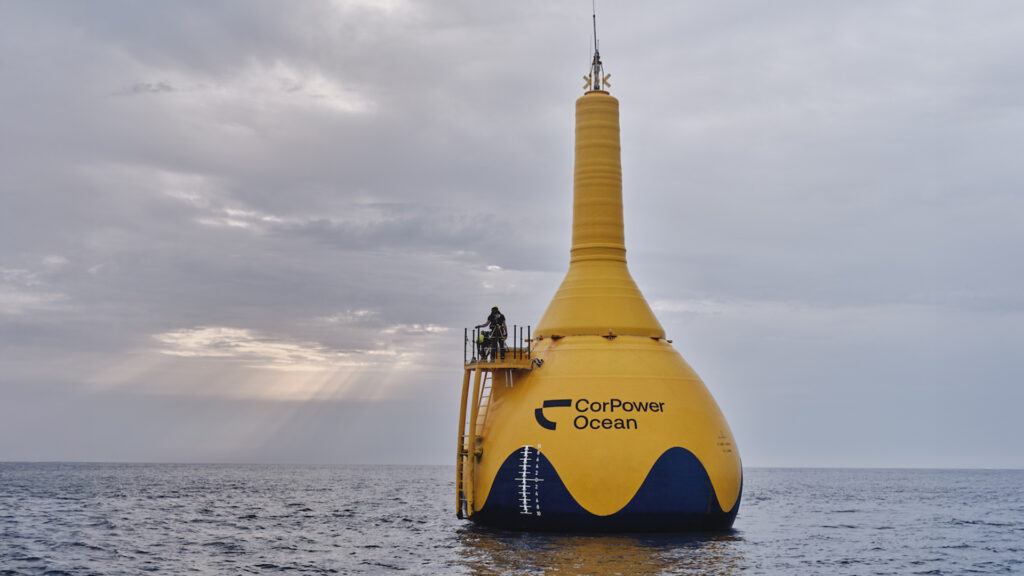Ocean Energy Europe considers how ocean energy complements other renewable sources like the wind and the sun to create a more stable, cost-effective, emission-free power grid in Europe.
Europe is targeting emission-free energy systems by 2050. This is an important and absolutely important step towards facing the global climate crisis. To achieve that goal, a massive scale-up of renewable energy production is required. Today, the cheapest forms of electricity production, wind and solar, will become the backbone of future energy systems. According to the latest Irena Power Cost Report, the new solar project was 41% cheaper than the lowest-cost fossil fuel alternatives in 2024, while the onshore wind project was 53% cheaper. However, wind and solar power vary, and the more you rely on them, the more you need other renewables to balance the grid when the wind is not blowing or when the sun is not shining.
Balancing the grid and ocean energy
Wave and tidal energy is perfect for complementing fluctuating renewable energy. It can advantageously replace the fossil fuels currently used to balance renewable production. Ocean energy helps to convert European power grids into safer, cheaper management, 100% emissions systems.
Tidal Energy Technologies uses tidal current flow to generate renewable electricity. Essentially, their energy production depends solely on the tide cycle. This can be predicted accurately and accurately several hundred years ago. This means that the exact output of a tide device device can be calculated at any time. This is a valuable benefit for balancing energy systems based on variable sources.
Wave Energy Technologies uses a variety of designs to capture and convert the movement of ocean waves into electricity. The waves are built offshore by wind and can be measured accurately a few days before reaching the production site. Furthermore, after the wind dies, the waves often last for hours. Wave energy devices also take up much less space than large offshore wind turbines. These benefits make wave energy the perfect partner for offshore winds. For example, adding wave devices to offshore wind farms reduces expensive flexibility and reduced system costs by optimizing the use of maritime space while smoothing out the overall generation curve.
Furthermore, the energy production of European waves is significantly higher over winter, precisely when electricity demand is the highest. It also means that wave energy production is highest when solar energy is at its lowest, meaning that the two technologies are very complementary over the year. Wave energy helps Europe to more closely align electricity supply and demand, reducing the need for storage and fossil fuels, reducing costs and emissions reductions.

Save money with ocean energy
Funded by the Scottish Enterprises, the Swedish Energy Agency, and the Fandavarapara A-Ciencia EA Technology, the Evolve project studied the system benefits of marine energy in the UK, Ireland and Portugal.
Ocean Energy Europe recently published a short report highlighting the key results of the project, adding a fourth case study focusing on the Faroe Islands, based on research funded by Fallows Utility SEV. In these four cases, the benefits of marine energy to the power grid have been quantified and modeled using scenarios generated by government or transmission system operators (TSOs). All data show that even a small portion of marine energy on the grid significantly reduces fossil fuel consumption, CO2 emissions and dispatch costs.
Ireland has impressive wave energy resources and could potentially install a wave energy capacity of 19 GW. In total, this creates three times the current annual electricity demand for Ireland. However, adding 1 GW of wave energy to the Irish Energy Mix in 2030 will already reduce annual carbon emissions by 12% and save 300 million euros in dispatch costs.
The energy potential of the Portuguese waves corresponds to an installed capacity of 15.5 GW. This generates more energy than current annual electricity consumption. By 2030, installing 1 GW of vibration energy in Portugal would reduce carbon dioxide emissions by 16.4% and cost 230 million euros.
The UK is rich in both tidal and wave resources, allowing it to install approximately 11 GW of tidal energy and 25 GW of wave energy. However, the UK consumes much more electricity than Ireland and Portugal. It is 285 TWH compared to 30.4 TWH and 50.3 TWH respectively. This means that adding 1 GW of marine energy to the 2030 UK energy mix is a much lower percentage of the country’s total production. Still, this relatively small amount of ocean energy is already having a major impact by reducing carbon footprint by 2.6% and saving £100 million. Another scenario assumes that the more decarbonised grid will contain 12 GW of ocean energy by 2030. In that case, the annual savings on temporary employment costs amount to £1.03 billion.
Finally, the Faroe Islands are on track to reach the 100% renewable electricity sector by 2030, working to develop tide energy possibilities. The geography of 18 islands corrects and amplifies currents. This means that tidal forces can be continuously generated by generating them in different regions. According to the Faroese Utility SEV, adding 72 MW of tidal energy reduces the net generation capacity required by the island by 83 MW, reducing the total system cost of 33 million euros from 2020-2030.
The conclusion is clear. Ocean energy offers significant benefits to future emission-free energy systems. This applies to small amounts of marine energy, but the more installations, the greater the environmental benefits and lower the consumer’s electricity prices.
Expanding ocean energy
Full-scale marine energy devices have been proven in the ocean for years, and technology developers are ready to take the next step. However, for innovative sectors, it is expensive and requires support to trigger a full industrial deployment.
R&D funding must be maintained to enable early stage research, not just demonstration equipment and farms. Revenue support waves and tide farms surrounded by deployment targets and ring fences should be implemented in the national energy strategy to increase market visibility and attract private investors. To accelerate deployment and reduce costs, specific permitting processes for marine energy must be developed.
Marine energy technology already provides home-made, renewable electricity to European grids. The question is, whether ocean energy will be generated or not, but how can it accelerate its industrialization? Financial and political support from governments at all levels is needed to increase the deployment of marine energy and to reach the full potential of Europeans.
Europe must impose and transform years of innovation support for marine energy onto new industries. This reduces electricity costs and replaces polluted fossil fuels with self-powered electricity that is free of emissions.
This article will also be featured in the 23rd edition of Quarterly Publication.
Source link

